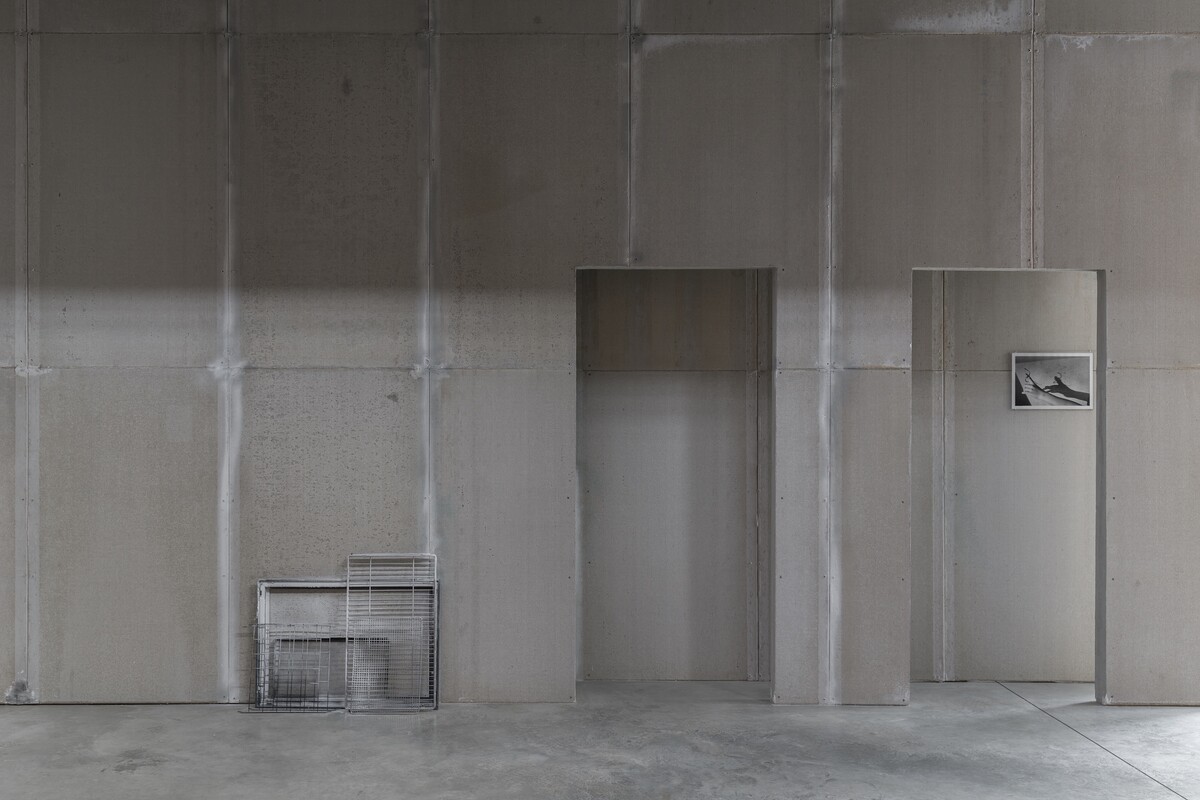Chris Murtha on Tolia Astakhishvili – review

Built from conventional building materials like plasterboard and cement, and later stained with coffee, dirt, and pigments to mimic the wear and tear of time, Tolia Astakhishvili’s installations hover between construction and destruction. Originally designed to repair trolleys and later used to manufacture derricks, hoists, and cranes, the SculptureCenter’s brick and cast-iron building proves a fitting host for the Georgian artist’s first exhibition in the United States. Having previously explored the mutability of domestic spaces and the ways they accumulate the traces and changes of their inhabitants, here Astakhishvili grapples with a former industrial site, but still remains focused on what spaces tell us about the people who have come and gone.
As with two recent exhibitions in Germany, Astakhishvili integrates collaborative projects and works by colleagues into her installations – extending authorship rather than challenging it. As a microcosm of the exhibiting institution, her constructed environments become fleeting hosts for her own and others’ artworks. The first sculpture that visitors encounter is Astakhishvili’s The Endless House (all works 2024 unless otherwise noted), a freestanding wall made of cement and particle board, modeled on those in the building’s basement. The narrow cavities of the structure house a sculpture and a photograph by Katinka Bock and echo with the sound of approaching horns. Also reminiscent of locomotion are the car engines wedged between warped plywood and pallets in The art of sleeping purr with the sound of roaring engines. These and other soundtracks composed from field recordings with Dylan Peirce, with whom we have frequently collaborated, permeate the gallery and confuse our perception of inside and outside, of actual and represented.
Astakhishvili’s installations bring to the fore the normally hidden channels that run through our buildings, such as pipes and air shafts. Yet the artist’s fragmented pipes serve no function, lead nowhere, and create only imaginary connections. Music and voices pass from one end of the exhibition to the other, as if they were streaming through the vents of her sculptures. A corroded faucet and a malfunctioning system of water pipes transform one of the four cell-like areas of the I can’t stop living– a cross-section seemingly from an apartment block or a brutalist prison – into a haunting washroom. In each room, the same video plays on identical screens, like a broadcast being sent to different apartments. Produced with James Richards, I remember (depth of flattened cruelty) (2023–ongoing) takes viewers through a glitchy, digitally animated and collaged tour of the collaborators’ previous installations. Scrawled across the unpainted walls are subtle gossamer drawings of ghostly figures and phrases (“Yesterday seems very distant,” “Our macho cruelties are amplified,” etc.), suggesting that even these claustrophobic caves can provide a meaningful refuge.
With two large debris chutes descending from above to the ground, Astakhishvili has transformed the cavernous main gallery into a disused facility. At the base of each plasterboard structure lies a scattered collection of used objects: necklaces and bicycle chains, scraps of fabric, silverware and cake tins, jewelry and plastic toys, machine parts, tools and hardware, and numerous model houses and boats. Miniature houses, scale models, and 3D-printed plans are a recurring motif in Astakhishvili’s work, representing an ideal form, a desired future, or a remembered past. A prominently placed found model, a student project wrapped in a clear garbage bag and ready for disposal, is a humbling reminder of how quickly dreams can be shattered.
The shafts are covered with grates and lined inside with coat hooks and wire shelves that catch falling objects. They double as filters. What gets through and what gets filtered out becomes a grim metaphor for the movement of people. With so much left behind – abandoned in a hurry, but not necessarily thrown away – it’s hard not to think of buildings that were hastily evacuated during a war or natural disaster. People like us in waran ink drawing on a torn piece of board, showing silhouettes of figures trudging through a desolate landscape, makes the theme of forced emigration more explicit. With its desolate locations, feigned decay and discarded belongings all alluding, albeit indirectly, to involuntary displacement, Astakhishvili’s exhibition is particularly striking at this historical moment.
Outside, in the gravel courtyard, near a circular arrangement of folding chairs that indicate a recent gathering, Astakhishvili has sewn two separate sections of chain-link fence together with heavy-duty chain to form the sculpture. One to one. The care inherent in her crude but reparative action is undermined by the realization that she has only reinforced the dividing effect of the fence. It is the simplest sculpture in the exhibition, little more than a gesture, but it successfully embodies the ever-shifting tension between the desire to connect with others and the need to feel safe at home.



:max_bytes(150000):strip_icc():focal(749x0:751x2)/Taylor-Tay-Lautner-STEM-tout-070924-79feea31247048caa59052358bab2a81.jpg)